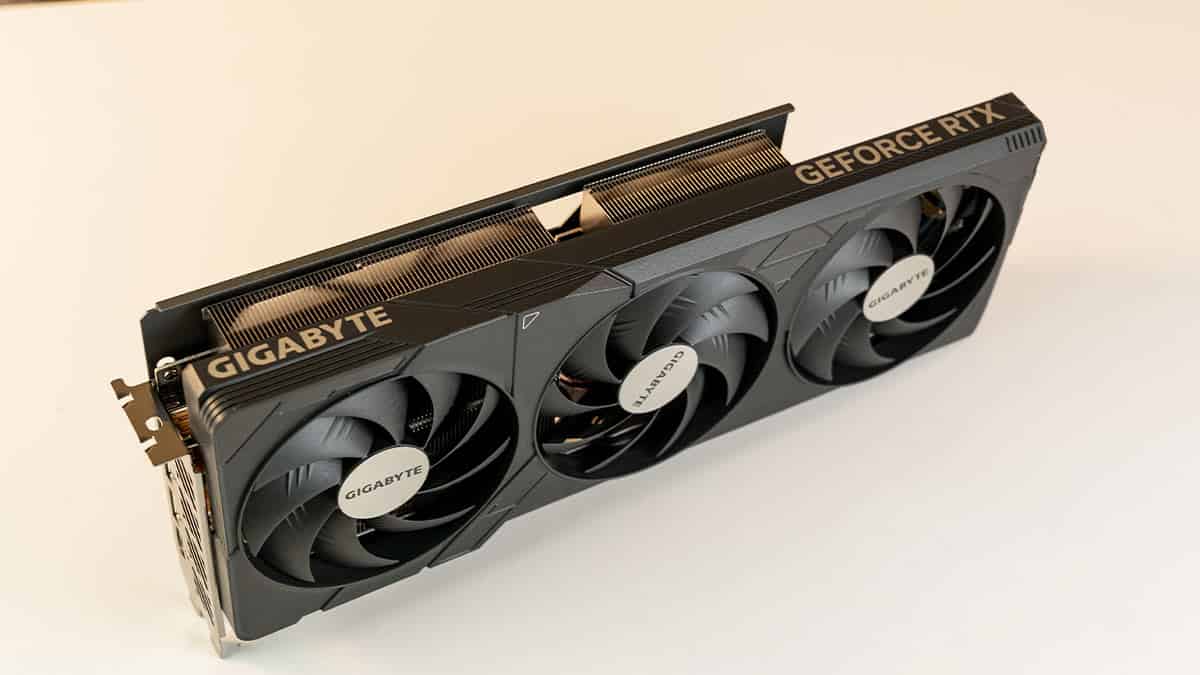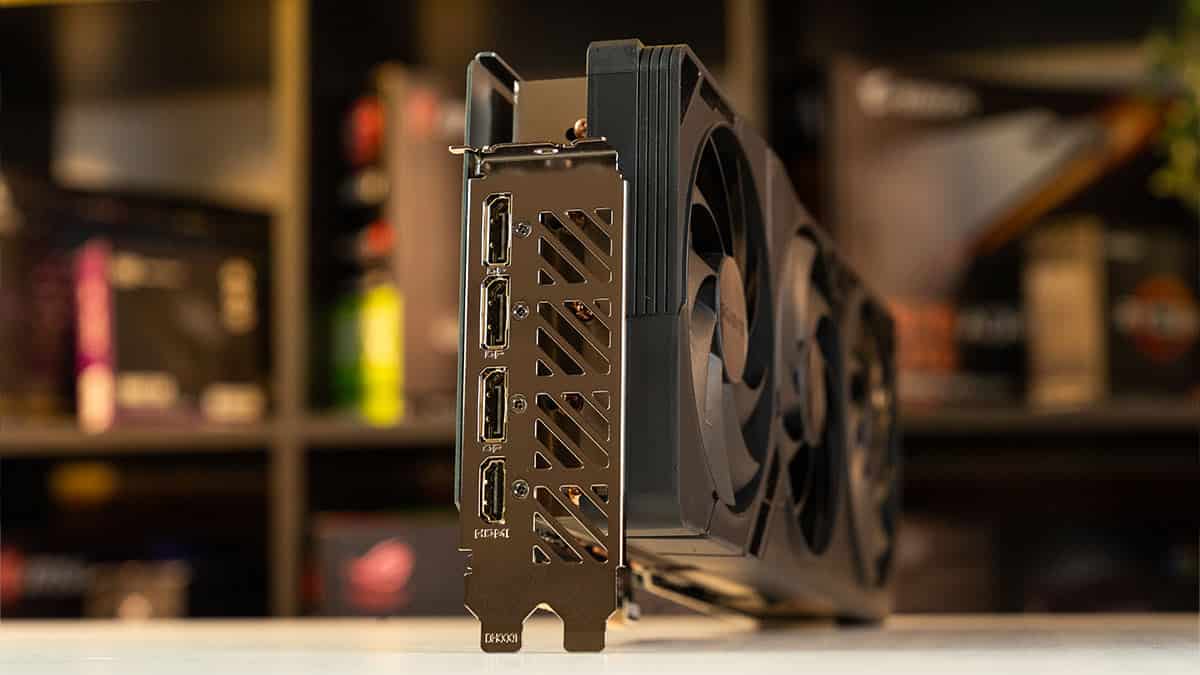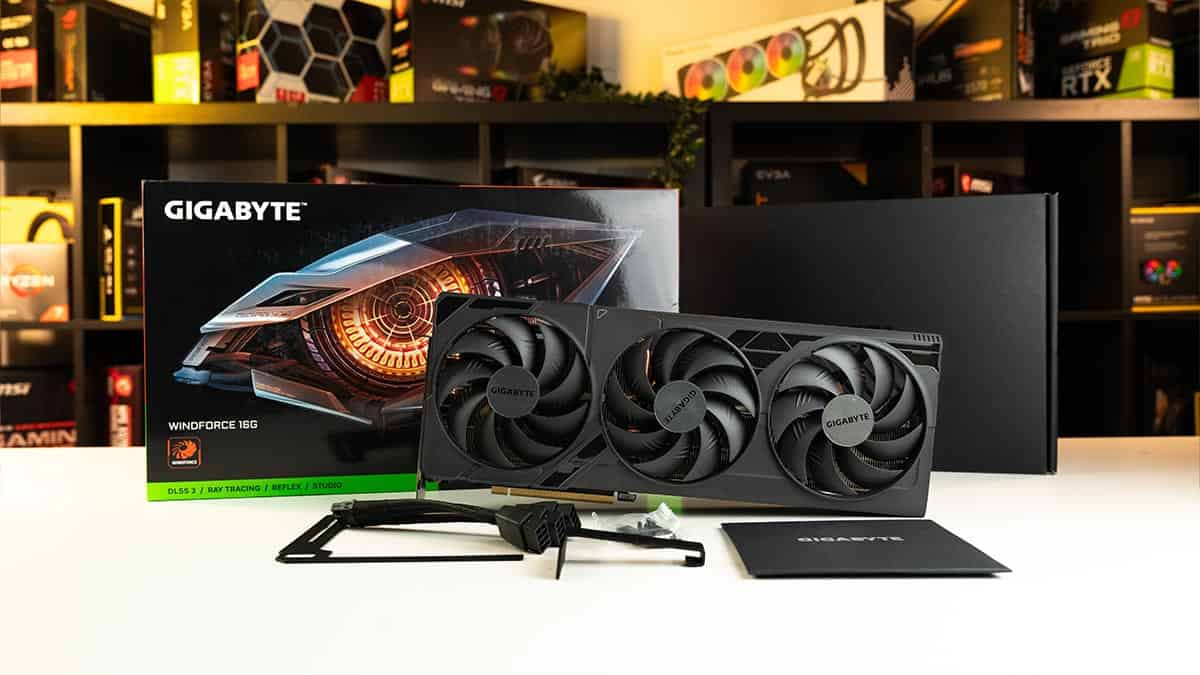Video Gamer is reader-supported. When you buy through links on our site, we may earn an affiliate commission. Prices subject to change. Learn more
- Lower MSRP
- Leading gaming performance
- Slightly faster than original
- Still expensive for 80-class
- Pricing will vary on manufacturer
The Nvidia RTX 4080 is finally the 80-class graphics card that we should have gotten over a year ago. Not only is the price far more palatable now, but there’s also a little more grunt under the hood to squeeze a few more frames out. While not a sweeping departure from its predecessor, we think that the RTX 4080 Super can be considered among the best graphics cards on the market. Read on to find out why.
Nvidia RTX 4080 Super price and availability
The Nvidia RTX 4080 Super was announced and released in January 2024 with an MSRP starting at $999 / $959 – which is its main selling point. Team Green may no secret of the fact that the card was basically just a cheaper version of its high-end offering that knocked a full $200 / £180 off the first iteration’s price tag. In our RTX 4080 we praised the performance but said its price tag was a bitter pill to swallow after all.
We can’t exactly pretend that a $1,000 / £960 graphics card can be considered one of the best budget GPUs or best value GPUs, but more performance for less money is definitely worthy of praise. We go over more details of both the predecessor and this new release in our RTX 4080 Super vs RTX 4080 feature, but the main throughline is we recommend this one over the first variant because it saves you money.
Gigabyte Nvidia GeForce RTX 4080 Super

Base Clock
2.595 gigahertz
Boost Clock
2.595 gigahertz
VRAM
16GB
TDP
320W
ASUS ROG Strix RTX 4080 Super OC

Base Clock
2.024 gigahertz
Boost Clock
2.505 gigahertz
VRAM
16GB
TDP
320
Nvidia RTX 4080 Super design and features

Very little has changed with the Nvidia RTX 4080 Super’s design in contrast to the original. Team Green’s latest GPU refresh is once again built upon the AD103 die and features 16GB GDDR6X VRAM on a 256-bit memory bus. What has changed, however, is the core count, as this new iteration has 10,240 CUDA cores when compared to the base RTX 4080’s 9,728 CUDA cores for a bump up of around 5%.
What you’ll also noticed if you take a more granular look under the hood is the slightly increased base clock speed of the RTX 4080 Super in contrast to the original. Out of the box, the card is clocked at a base frequency of 2,295 MHz with a boost clock of 2,550 MHz. The original, for context, came with a base frequency of 2205 MHz and a boost clock of 2505 MHz. The Super version is around 4% faster.
Our specific review unit is the Gigabyte RTX 4080 Super Windforce model which has a couple of standout features from the base Founders Edition model from Nvidia. Namely, these include an anti-sag bracket, a protective metal backplate, the “Windforce” cooling system, and dual bios functionality. The triple fan setup spin in alternative directions should should mean more effective cooling than in-line.
Regardless of which version you opt for, you’ll either be using the usual 16-pin connector or an adapter which will be for 3x 8-pin PCIe power connectors. We recommend using one of the best PSUs for RTX 4080 Super to ensure the best compatibility. The card has a TDP of 320W and with a suggested PSU of 700W. While the Founders Edition model is a three-slot, partner cards may be bigger.
Nvidia RTX 4080 Super performance

In the testing conducted by WePC’s Sebastian Kozlowski, we found that the RTX 4080 Super performed a touch better than the RTX 4080 in the vast majority of circumstances by around 2-3%. That’s likely due to the minor bump up in core count, but unlikely to be the main seller here for the high-end refresh. Getting into specifics reveals just how good the new GPU is at handling 1440p and 4K at high framerates.
Starting with Cyberpunk 2077, the RTX 4080 Super has no trouble in barrelling through CD Projekt Red’s action RPG with impressive average framerates of 155fps in 1080p, 125fps in 1440p, and 51fps natively in 4K. This extends to the ray tracing prowess with figures of 86fps, 54fps, and 28fps in 1080p, 1440p, and 4K respectively. Considering there’s no DLSS used here, that’s an impressive feat to be sure.
Things get more impressive when factoring in modern AAA games, though. Take Assassin’s Creed Mirage and Avatar: Frontiers of Pandora for instance. Both titles achieved averages of 156fps and 154fps in 1080p respectively, 139fps and 119fps in 1440p, and 95fps apiece in 4K. You’re getting well-above 4K60 in quite taxing games here and the RTX 4080 Super doesn’t even break a sweat with the titles in “Ultra settings”.
Then we move onto how the RTX 4080 Super handles shooters and it’s a true steamrolling. Starting off with Doom Eternal, Nvidia’s flagship model barrages through ID Software’s latest with 344fps in 1080p, 370fps in 1440p, and 230fps in 4K. The same can be said with Rainbow Six Siege and CS2 with averages of 485fps and 351fps in 1080p, 356fps and 305fps in 1440p, as well as 194fps and 171fps in 4K respectively.
What’s more, if you want to invest in a more recent competitive shooter, then the RTX 4080 Super also chews straight through The Finals in “Epic” settings as well. We benched it with averages of 286fps in 1080p, 189fps in 1440p, and 99fps in 4K. Dial in ray tracing and there’s not much of a dip either. The card output averages of 254fps in 1080p, 182fps in 1440p, and 95fps with RT enabled, too.
Should you buy the Nvidia RTX 4080 Super?

What we have based on our testing is a $999 GPU that plays like one, proving that 80-class hardware in the Ada line-up never necessarily had to be $1,200 and up. The price cut and slight performance boost mean it is a graphics card that we’re far happier in recommending for the money. We do not recommend “upgrading” from an RTX 4080 to a Super variant, but if you’re running the likes of the RTX 4070 (or earlier) then it will likely be a massive upgrade.
Copy by Aleksha McLoughlin ; Testing by Sebastian Kozlowski

